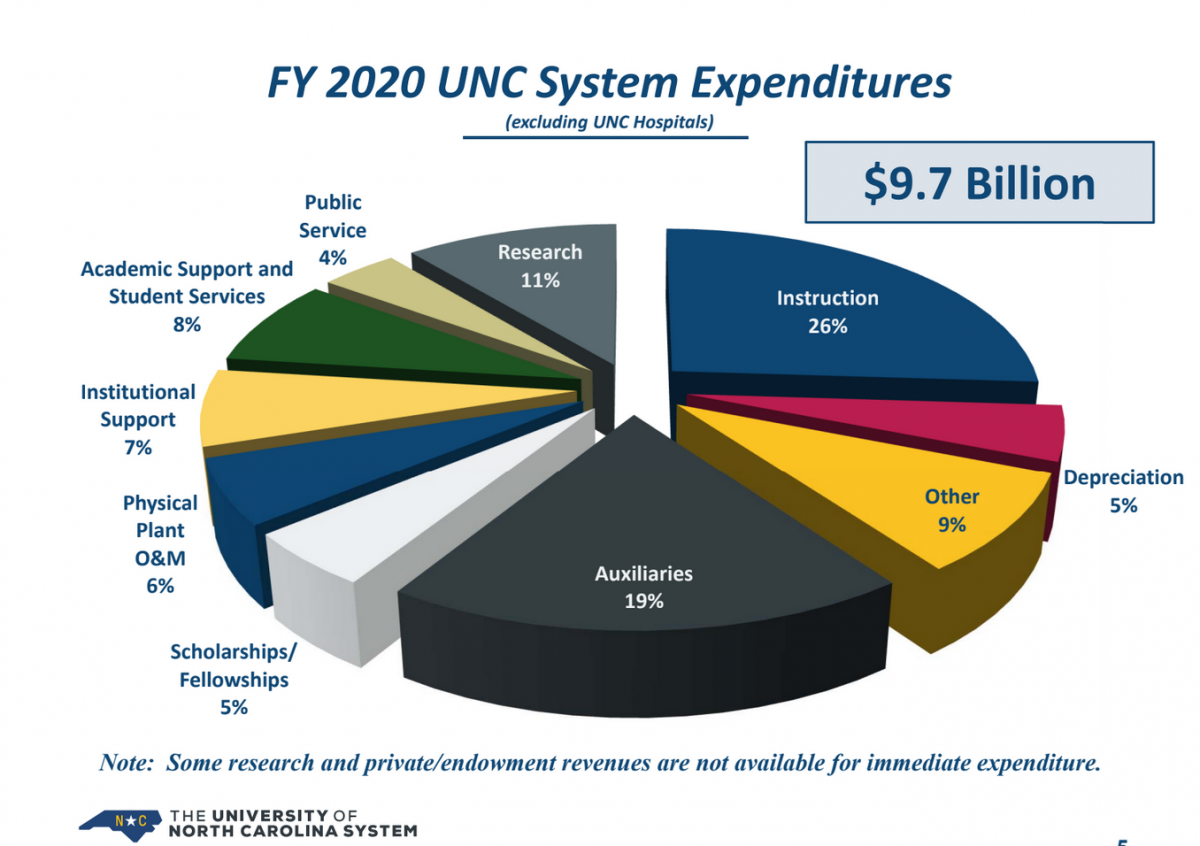As a public institution, it’s vital that the University of North Carolina system is transparent with how it spends its money. As a form of accountability, the system is required by state law to provide publicly accessible financial data.
In fiscal year 2020, the UNC system spent $9.7 billion, a total that excludes expenditures by UNC hospitals.
Where does all that money go? Below is a breakdown by percentage of the system’s spending:
- Instruction: 26 percent
- Auxiliaries (residence halls, food services, college stores, etc.): 19 percent
- Research: 11 percent
- Other: 9 percent
- Academic Support and Student Services (libraries, museums, career guidance, financial aid administration, etc): 8 percent
- Institutional Support (general administrative services, legal and fiscal operations, and public relations and development): 7 percent
- Physical Plant O&M: 6 percent
- Scholarships/Fellowships: 5 percent
- Depreciation: 5 percent
- Public Service (public seminars and projects, cooperative extension services, etc): 4 percent
Between fiscal year 2019-2020 and fiscal year 2020-2021, the UNC system’s General Fund spending changed in the following ways:
- Expenditures for “Personal Services” increased by 2 percent
- Expenditures for “Purchased Services” decreased by 6 percent
- Expenditures for “Aid & Public Assistance” increased by 4 percent
- Expenditures for “Other” increased by 47 percent (according to the report, “the majority of the System-Wide increase in the Other Expenses category are due to COVID-19 expenses.”)
These high-level breakdowns of expenditures can be viewed on a campus-by-campus level here.
The five-year summary report breaks down the expenditure categories in a little more detail. Over a five-year period (fiscal year 2015-2016 to fiscal year 2019-2020), the UNC system’s General Fund expenditures changed in the following ways:
- “Personnel” expenditures increased by 16 percent
- “General Operating” expenditures increased by 9 percent
- “Equipment and Capital” expenditures decreased by 8 percent
- “Miscellaneous” expenditures increased by 12 percent
- “Education Awards” expenditures increased by 10 percent
- “Intragovernmental Transfers” expenditures increased by 16 percent
- “Carry Forward to Next Year” expenditures decreased by 64 percent
More details on the 5-year summary can be found here.
And additional financial information can be found here.
UNC officials have told the Martin Center that they plan on developing a more detailed picture of all campus budgets and will share this information with the public when available.
Shannon Watkins is senior writer at the James G. Martin Center for Academic Renewal.

